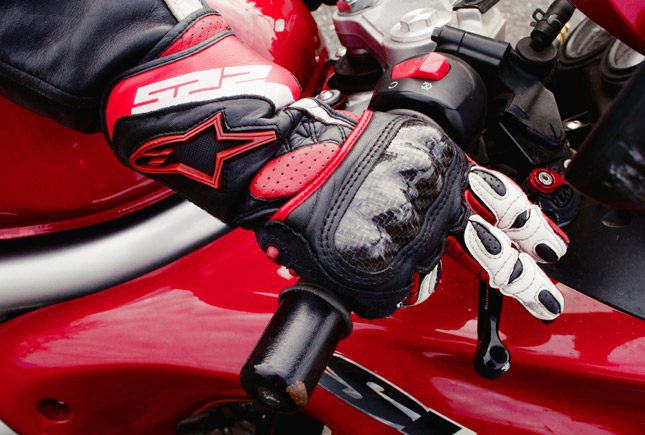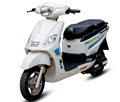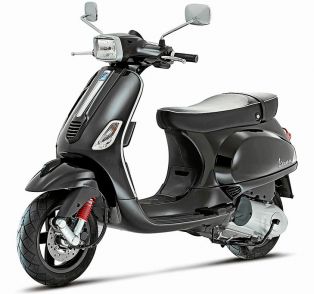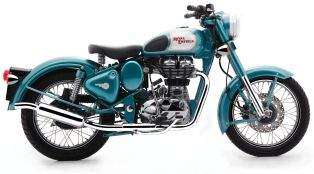Often we refer motorcycle riding a skill and stopping a bike is as important & skillful act as riding it. But using brakes to stop a motorcycle is it the only prerequisite to stop the bike or there is a science behind that?
 Let's find out what is the technique to use your bike's brakes to stop it as efficiently as it should be. As we all know, now use of disc brakes have become normal phenomenon these days, leave apart front now we get disc brakes on the rear wheel of the bikes which belong to premium class.
Let's find out what is the technique to use your bike's brakes to stop it as efficiently as it should be. As we all know, now use of disc brakes have become normal phenomenon these days, leave apart front now we get disc brakes on the rear wheel of the bikes which belong to premium class.
Disc Brakes Vs Drum Brakes
There is no need to explain how efficient the disc brakes are as compare to the drum brakes used since the inception of the 2- wheelers. In short you can understand the effectiveness of disc brakes with its increased surface area provided for the better friction applied on the disc by the disc pads, which makes it as much as triple effective in braking in comparison of drum brakes.
Front Brakes Vs Rear Brakes
It was the front wheel of the motorbike which got the disc brake first, at least this is true for Indian automobile scenario. Prior to the introduction of disc brake to the front wheel we used to have only drum brakes up front with the drum brakes at the rear wheel as well. And frankly those who have ridden bikes like Yamaha RX100 and RD 350 can tell you how ineffective those front drum brakes were for those rockets. The reason behind the ineffectiveness of same sized drum brakes used at the front wheel as it is used at the rear was simple, it requires more effort to stop the front wheel from rolling as compare to rear wheel, as, when we apply brakes the weight transfers from rear to the front wheel and stopping a wheel which is rolling bearing with maximum load on it, requires more than what a drum brake is actually capable of.
So, it is proved that the front brake plays more important role in stopping a bike than rear brake and hence bigger disc brakes or even double disc brakes are used on bikes with larger capacity engine and laden weight.
Using Brakes In Panic
Normally, it is believed that we should not use the front disc brakes in emergency but it is a myth as now we all know that how important is a front brake in stopping a bike and with disc brakes it is even more helpful and efficient in stopping a bike.
The problem with front disc brake is it tends to get locked when applied suddenly in panic situation. In reality the locking of wheel proves the efficiency of the disc brake but locking of wheel does not solve the problem in fact it creates another problem. You can be thrown flip-side or the bike can be skid and nobody wants this to happen.
Technique Of "Staged Braking"
To avoid the catastrophe while applying front disc brakes with full force in emergency situation you should learn the technique of progressive braking also known as Staged Braking. But one should remember that it's "the practice that makes a man perfect", never wait to test your skills in the emergency, rather keep practicing regularly to achieve the perfection.
In progressive braking you should start practicing it with slow and constant speed, the staged braking is broadly divided into Four steps:
Use Of Rear Brakes
It is always advisable to apply both front and rear brake simultaneously but there are difference of opinion in applying both brakes in emergency. As it is almost certain that the rear wheel is going to be locked when applied fully in panic and will hardly help you to maintain command with the front brake but at least by applying rear brake along with front brake in emergency you get better control even if the rear wheel gets locked and starts skidding. The skidding rear wheel followed by the progressive front braking will eventually help you to regain control on the bike.
Use Of Engine Braking
We all know that when the engine is engaged with gears that put some braking effort on the momentum of the bike but on the contrary when you apply brakes the engine well engaged acts as momentum provider hence it proves anti braking element. So, it is a thumb rule in braking to compress the clutch as soon as you apply the brakes to disengage the engine from the transmission.
There are other factors too which directly affect your brakes or the braking ability:
Hope you find this article little help and that it will increase your riding competence. Please share your thoughts on this and ride safe.
By: Farhan Kashif
 Let's find out what is the technique to use your bike's brakes to stop it as efficiently as it should be. As we all know, now use of disc brakes have become normal phenomenon these days, leave apart front now we get disc brakes on the rear wheel of the bikes which belong to premium class.
Let's find out what is the technique to use your bike's brakes to stop it as efficiently as it should be. As we all know, now use of disc brakes have become normal phenomenon these days, leave apart front now we get disc brakes on the rear wheel of the bikes which belong to premium class. Disc Brakes Vs Drum Brakes
There is no need to explain how efficient the disc brakes are as compare to the drum brakes used since the inception of the 2- wheelers. In short you can understand the effectiveness of disc brakes with its increased surface area provided for the better friction applied on the disc by the disc pads, which makes it as much as triple effective in braking in comparison of drum brakes.
Front Brakes Vs Rear Brakes
It was the front wheel of the motorbike which got the disc brake first, at least this is true for Indian automobile scenario. Prior to the introduction of disc brake to the front wheel we used to have only drum brakes up front with the drum brakes at the rear wheel as well. And frankly those who have ridden bikes like Yamaha RX100 and RD 350 can tell you how ineffective those front drum brakes were for those rockets. The reason behind the ineffectiveness of same sized drum brakes used at the front wheel as it is used at the rear was simple, it requires more effort to stop the front wheel from rolling as compare to rear wheel, as, when we apply brakes the weight transfers from rear to the front wheel and stopping a wheel which is rolling bearing with maximum load on it, requires more than what a drum brake is actually capable of.
So, it is proved that the front brake plays more important role in stopping a bike than rear brake and hence bigger disc brakes or even double disc brakes are used on bikes with larger capacity engine and laden weight.
Using Brakes In Panic
Normally, it is believed that we should not use the front disc brakes in emergency but it is a myth as now we all know that how important is a front brake in stopping a bike and with disc brakes it is even more helpful and efficient in stopping a bike.
The problem with front disc brake is it tends to get locked when applied suddenly in panic situation. In reality the locking of wheel proves the efficiency of the disc brake but locking of wheel does not solve the problem in fact it creates another problem. You can be thrown flip-side or the bike can be skid and nobody wants this to happen.
Technique Of "Staged Braking"
To avoid the catastrophe while applying front disc brakes with full force in emergency situation you should learn the technique of progressive braking also known as Staged Braking. But one should remember that it's "the practice that makes a man perfect", never wait to test your skills in the emergency, rather keep practicing regularly to achieve the perfection.
In progressive braking you should start practicing it with slow and constant speed, the staged braking is broadly divided into Four steps:
- In first step you should apply front brake with minimal pressure with two fingers of your right hand and try to feel the contact with the wheel. When this is done after sometime try to apply further more pressure to stop the bike at a desirable distance. Remember, never apply altogether same pressure directly, first achieve the primary step and then proceed for the second step. This sounds difficult but you can attain this with regular practice.
- In the third step of the process you should apply pressure little harder but not to that extant that the wheel could get locked. Again the third step would be followed by the previous two steps.
- There is another fourth step of the staged braking where you apply all you've got on the front brake and this could lead to the wheel lock but if you practice all these steps you will get mastered in this technique and will apply full brakes in steps even in panic situation. This will happen automatically once it becomes involuntary.
It is always advisable to apply both front and rear brake simultaneously but there are difference of opinion in applying both brakes in emergency. As it is almost certain that the rear wheel is going to be locked when applied fully in panic and will hardly help you to maintain command with the front brake but at least by applying rear brake along with front brake in emergency you get better control even if the rear wheel gets locked and starts skidding. The skidding rear wheel followed by the progressive front braking will eventually help you to regain control on the bike.
Use Of Engine Braking
We all know that when the engine is engaged with gears that put some braking effort on the momentum of the bike but on the contrary when you apply brakes the engine well engaged acts as momentum provider hence it proves anti braking element. So, it is a thumb rule in braking to compress the clutch as soon as you apply the brakes to disengage the engine from the transmission.
There are other factors too which directly affect your brakes or the braking ability:
- Tyre Treads
- Condition of brake pads
- Condition of track and turf
- Weight of bike (with or without rider)
- Climatic condition
- Bike Angle at which brakes are applied etc.
By: Farhan Kashif











